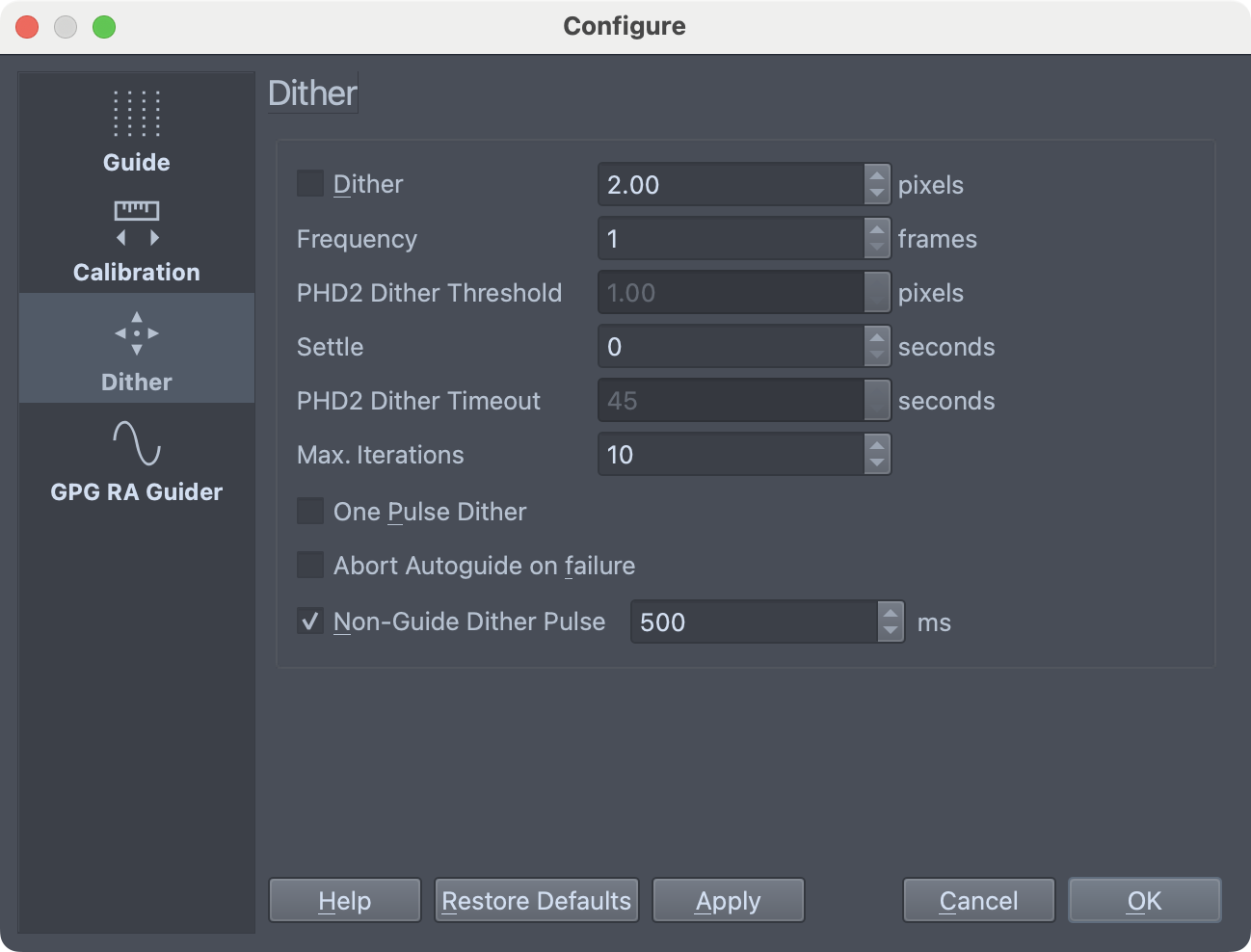Hello everyone!
I'm considering migrating from NINA to Astroberry so that I can keep the pc at home and connect remotely while staying warm to check that everything is ok during the session.
Right now my very basic setup consists of :
- Star Adventurer (I hope to replace it with a heq5 pro soon).
- Evostar 72 ED apochromatic refractor.
- Canon 2000d Astromodified
That said I have two main problems.
1 ----
I do not currently have an autoguiding system (as I am raising the money to upgrade to an equatorial mount) but I would still like to do dithering. Only in RA, I know.
As of now I have made a usb-st4 adapter (https://github.com/kevinferrare/arduino-st4) and through NINA I can use its "direct guide" to do dithering on my star-adventurer without going through a guiding camera.
Do any of you do this with ekos/kstars? Do you know if and how it can be done?
2 ----
Unlike ASCOM where via CanonSDK I connect to nina with one click, with indi I am having serious problems:
- It won't let me set the 14 bits per pixel, but instead fixes at 8 (Is this a real problem or just a graphic rendering error?).

I press set, but the 8 does not change (I also tried with a maximum of 6020x4015, as are the files I find in the sd card)
- The moment I take a test shot of, say, 5 seconds actually every now and then the actual shot is less. I would not want this then to happen during a sequence as well. (I have the SLR in manual and BULB) (Can I go there safely trusting that it is something that happens occasionally only in previews?).
-------------
I realize I am almost at the physical limit of my equipment but I want to make the most of it!
I tried to go through the official ekos/kstars/indi documentation regarding these topics but could not find much. Are there dedicated resources?
Thank you very much indeed and clear skies!
FT
I'm considering migrating from NINA to Astroberry so that I can keep the pc at home and connect remotely while staying warm to check that everything is ok during the session.
Right now my very basic setup consists of :
- Star Adventurer (I hope to replace it with a heq5 pro soon).
- Evostar 72 ED apochromatic refractor.
- Canon 2000d Astromodified
That said I have two main problems.
1 ----
I do not currently have an autoguiding system (as I am raising the money to upgrade to an equatorial mount) but I would still like to do dithering. Only in RA, I know.
As of now I have made a usb-st4 adapter (https://github.com/kevinferrare/arduino-st4) and through NINA I can use its "direct guide" to do dithering on my star-adventurer without going through a guiding camera.
Do any of you do this with ekos/kstars? Do you know if and how it can be done?
2 ----
Unlike ASCOM where via CanonSDK I connect to nina with one click, with indi I am having serious problems:
- It won't let me set the 14 bits per pixel, but instead fixes at 8 (Is this a real problem or just a graphic rendering error?).

I press set, but the 8 does not change (I also tried with a maximum of 6020x4015, as are the files I find in the sd card)
- The moment I take a test shot of, say, 5 seconds actually every now and then the actual shot is less. I would not want this then to happen during a sequence as well. (I have the SLR in manual and BULB) (Can I go there safely trusting that it is something that happens occasionally only in previews?).
-------------
I realize I am almost at the physical limit of my equipment but I want to make the most of it!
I tried to go through the official ekos/kstars/indi documentation regarding these topics but could not find much. Are there dedicated resources?
Thank you very much indeed and clear skies!
FT
